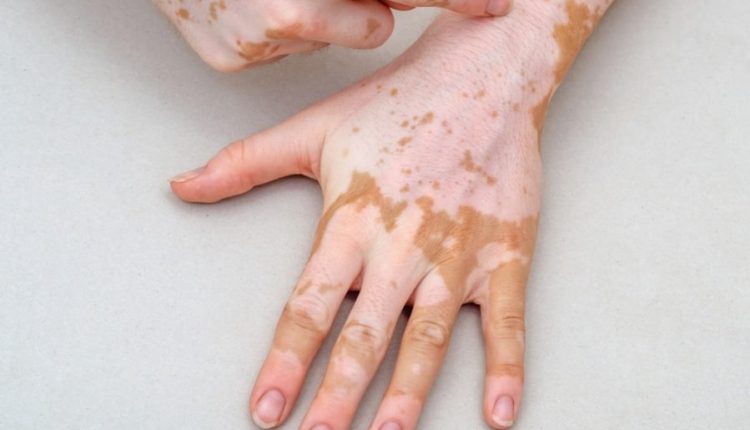
Dermatology, what is vitiligo?
Vitiligo causes the development of hypotrophic or achromic skin spots and is an acquired pigmentation disorder
Approximately 0.5-2% of the world’s population is affected.
Vitiligo affects both sexes and begins mainly in childhood or after the age of 20.
What are the causes of vitiligo?
The causes of vitiligo are still not completely clear.
According to the most widely accepted theory, it is an autoimmune disease generated by an incorrect response of the immune system to melanocytes, cells responsible for melanin production.
Underlying vitiligo could also be factors of metabolic origin, such as endocrine gland disorders.
Familiarity, psychological and physical stress, sunburn and skin wounds are also risk factors for the development of vitiligo.
What are the symptoms of vitiligo?
Vitiligo causes a loss of melanin in certain areas of the body, which are then completely white to the eye.
The characteristic patches of vitiligo are therefore hypopigmented, may have smooth or jagged edges and have a central area that is noticeably whiter than the rest of the skin.
Vitiligo may occur in a non-segmental/bilateral form, i.e. with symmetrical patches on both sides of the body, particularly in the areas of the eyes, mouth, elbows, arms, hands and feet (this is the most common form, affecting 90% of patients), or in a segmental/localised form, which affects only one part of the body and occurs mainly in paediatric patients.
Other symptoms of vitiligo are early discolouration of hair, eyebrows, eyelashes and beard, discolouration of the mucous membranes of the nose and mouth, and retinal colour changes.
Vitiligo is diagnosed during a dermatological examination by means of an objective examination
Usually the dermatologist specialist illuminates the affected areas with a special blue light (Wood’s lamp) in order to more accurately detect the presence of the disease.
Treatments
Vitiligo cannot be eliminated, but areas already affected by the disease can be treated.
For milder forms of vitiligo, topical corticosteroids with topical calcineurin inhibitors or vitamin D analogues are usually prescribed.
For more advanced forms, treatments include phototherapy and the use of immunosuppressive drugs to pigment the areas affected by the patches (without, however, preventing disease progression).
Depigmentation of healthy skin, on the other hand, is recommended for selected cases where vitiligo is present on most of the body, to make the skin colour uniform.
The areas affected by vitiligo are more sensitive to sunburn and should not be exposed to sunlight, so they should be protected with sun creams with a high protective factor.
Clinical studies currently underway could lead to the use of new specific drugs and better management of the disease in the coming years.
Read Also:
Emergency Live Even More…Live: Download The New Free App Of Your Newspaper For IOS And Android
Vitiligo, The Dermatologist: ‘Mitigated With Innovative Therapeutic Approaches’
SkinNeutrAll®: Checkmate For Skin-Damaging And Flammable Substances
Healing Wounds And Perfusion Oximeter, New Skin-Like Sensor Can Map Blood-Oxygen Levels
Psoriasis, An Ageless Skin Disease
Psoriasis, A Disease That Affects The Mind As Well As The Skin
Psoriasis: It Gets Worse In Winter, But It’s Not Just The Cold That’s To Blame
Childhood Psoriasis: What It Is, What The Symptoms Are And How To Treat It
Topical Treatments For Psoriasis: Recommended Over-The-Counter And Prescription Options
What Are The Different Types Of Psoriasis?
Guttate Psoriasis: Causes And Symptoms
Vitiligo, The Dermatologist: ‘Mitigated With Innovative Therapeutic Approaches’
Vitiligo: What Causes It And How To Treat It
Phototherapy For The Treatment Of Psoriasis: What It Is And When It Is Needed
Vitiligo: Effective Treatments
Vitiligo: What It Is And How To Recognise It
Autoimmune Diseases: Care And Treatment Of Vitiligo
Nevi: What They Are And How To Recognise Melanocytic Moles
Dermatomyositis: What It Is And How To Treat It
Pityriasis Alba: What It Is, How It Manifests Itself And What Is The Treatment
Atopic Dermatitis: Treatment And Cure
Allergic Contact Dermatitis And Atopic Dermatitis: The Differences
Adverse Drug Reactions: What They Are And How To Manage Adverse Effects
Symptoms And Remedies Of Allergic Rhinitis
Allergic Conjunctivitis: Causes, Symptoms And Prevention
What Is And How To Read The Allergy Patch Test



